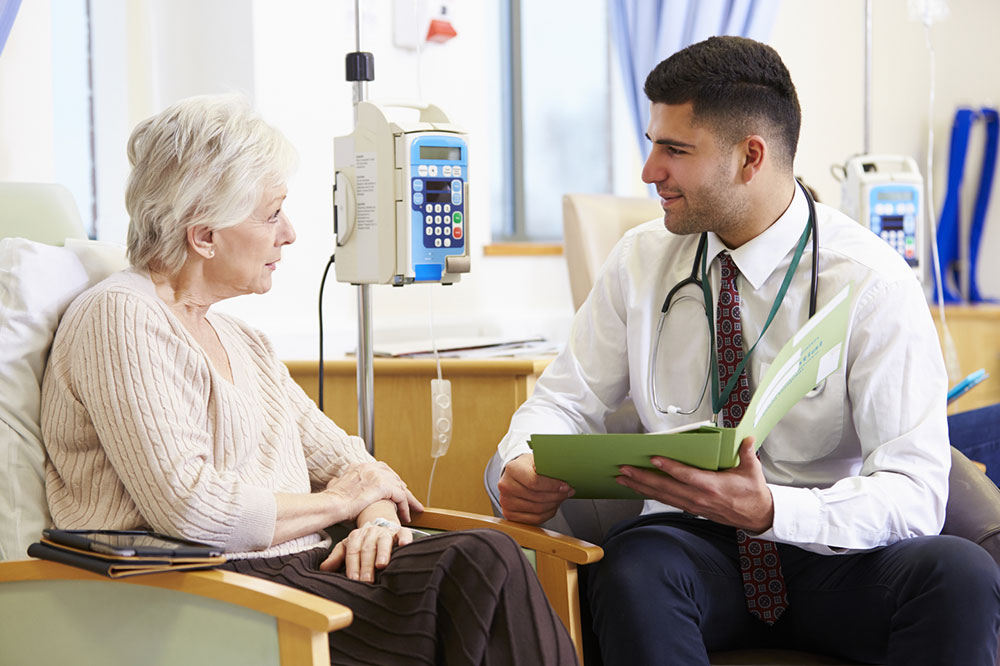Comprehensive Guide to Cancer: Types, Progression, Prevention, and Treatment Strategies
This comprehensive article explores the different types of cancer, their development stages, prevention strategies, and current treatment options. It emphasizes the importance of early detection and personalized treatment plans to improve patient outcomes. Stay informed to better understand this complex disease and how modern medicine is fighting it. Perfect for anyone interested in health sciences or seeking to increase awareness about cancer.

Comprehensive Guide to Cancer: Types, Progression, Prevention, and Treatment Strategies
Cancer remains one of the most challenging diseases to understand and manage, often invoking fear and uncertainty. To effectively combat this disease, it's essential to have a comprehensive understanding of what cancer truly entails, its various types, how it develops, ways to prevent it, and the current treatment options available. This in-depth guide aims to shed light on these critical aspects, providing valuable knowledge for patients, caregivers, and anyone interested in health sciences.
What is Cancer?
Cancer is a complex group of diseases characterized by the uncontrolled growth and spread of abnormal cells within the body. Unlike normal cells, which grow, divide, and die in a regulated manner, cancer cells ignore these controls, leading to the formation of malignant tumors or other abnormal growths. These rogue cells can invade surrounding tissues and, in many cases, spread to distant parts of the body through the bloodstream or lymphatic system, a process known as metastasis.
Understanding the distinction between benign and malignant tumors is fundamental. Benign tumors are localized, non-invasive, and typically harmless, often removable through surgery. In contrast, malignant tumors are capable of invading neighboring tissues and metastasizing, making them life-threatening and requiring more aggressive treatment approaches.
How Many Types of Cancer Are There?
The diversity of cancer types is vast, affecting virtually every organ and tissue in the human body. The World Health Organization estimates hundreds of different cancer subtypes, each with unique behaviors, treatment requirements, and prognoses. The most recognized classifications include sarcoma, melanoma, carcinoma, lymphoma, and leukemia, among others.
Sarcoma: These cancers originate in connective tissues such as bones, muscles, fats, cartilage, and blood vessels. They are relatively rare but known for their aggressive nature.
Melanoma: Cancers arising from melanocytes, the pigment-producing cells of the skin, which can spread rapidly if not detected early. Melanoma accounts for a small percentage of skin cancers but is responsible for most skin cancer-related deaths.
Carcinoma: These are the most common types of cancer, affecting epithelial cells lining organs and glandular tissues. Examples include lung, breast, prostate, and colorectal cancers.
Lymphoma: These cancers develop in lymphocytes, a type of white blood cell crucial for immune function. They often present as enlarged lymph nodes and can be Hodgkin or non-Hodgkin lymphoma.
Leukemia: Cancers of blood-forming tissues, leading to abnormal proliferation of blood cells in the bone marrow and bloodstream. Leukemias typically do not form solid tumors but cause systemic symptoms like fatigue and infections.
Stages of Cancer Development
Cancer is typically described in terms of stages, reflecting its size, extent, and spread. Recognizing these stages is vital for prognosis and treatment planning.
Stage 0: Also known as carcinoma in situ, this stage involves abnormal cells confined to the innermost layer of tissue, with no invasion into neighboring tissues.
Stage I: The cancer is localized, small, and contained within a single area. Typically, it has not yet spread to lymph nodes or distant organs.
Stage II & III: The tumor has grown larger and may have invaded nearby tissues. Lymph node involvement usually occurs at these stages, indicating local spread.
Stage IV: Also known as metastatic cancer, this stage indicates the spread of cancer to distant parts of the body, significantly impacting prognosis and treatment options.
Can Cancer Be Prevented or Cured?
Understanding how to reduce the risk of developing cancer is a cornerstone of public health. While not all cancers are preventable, certain lifestyle modifications can significantly lower risk factors. Maintaining a healthy diet rich in fruits, vegetables, and whole grains, avoiding tobacco and excessive alcohol consumption, engaging in regular physical activity, and protecting oneself from excessive sun exposure can reduce the likelihood of certain cancers.
For individuals at higher genetic or environmental risk, preventive measures such as chemopreventive medications—drugs aimed at reducing cancer risk—are available. Additionally, preventive surgeries might be recommended for those with hereditary cancer syndromes, like prophylactic mastectomy or oophorectomy.
Early detection through regular screening tests, such as mammograms, colonoscopies, and Pap smears, plays a crucial role in catching cancers early, when they are most treatable and curable.
Modern Treatment Strategies for Cancer
The treatment landscape for cancer has evolved dramatically, integrating multiple modalities tailored to individual patient needs and cancer specifics. The main treatment options include:
Surgery: Physical removal of tumors, often the first line of defense, particularly effective in early-stage cancers.
Radiation Therapy: Uses high-energy rays to destroy cancer cells, often combined with surgery or chemotherapy.
Chemotherapy: Systemic drug therapy that kills or inhibits the growth of cancer cells throughout the body.
Hormone Therapy: Blocks or suppresses hormones that certain cancers, like breast and prostate, depend on.
Immunotherapy: Boosts the body’s immune system to recognize and attack cancer cells more effectively.
Stem Cell Transplant: Replaces damaged or diseased bone marrow with healthy stem cells, primarily used in blood cancers like leukemia and lymphoma.
Each treatment option can be used alone or in combination, depending on the cancer type, stage, and patient health status. Advances in targeted therapies and precision medicine have further enhanced the efficacy and reduced the side effects of cancer treatments.In conclusion, while cancer remains a formidable health challenge, ongoing research, early detection, preventive strategies, and personalized treatments continue to improve survival rates and quality of life for patients worldwide. Awareness and education are critical tools in reducing the burden of cancer, empowering individuals to adopt healthier lifestyles and seek prompt medical care.





